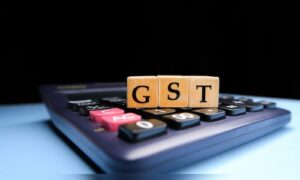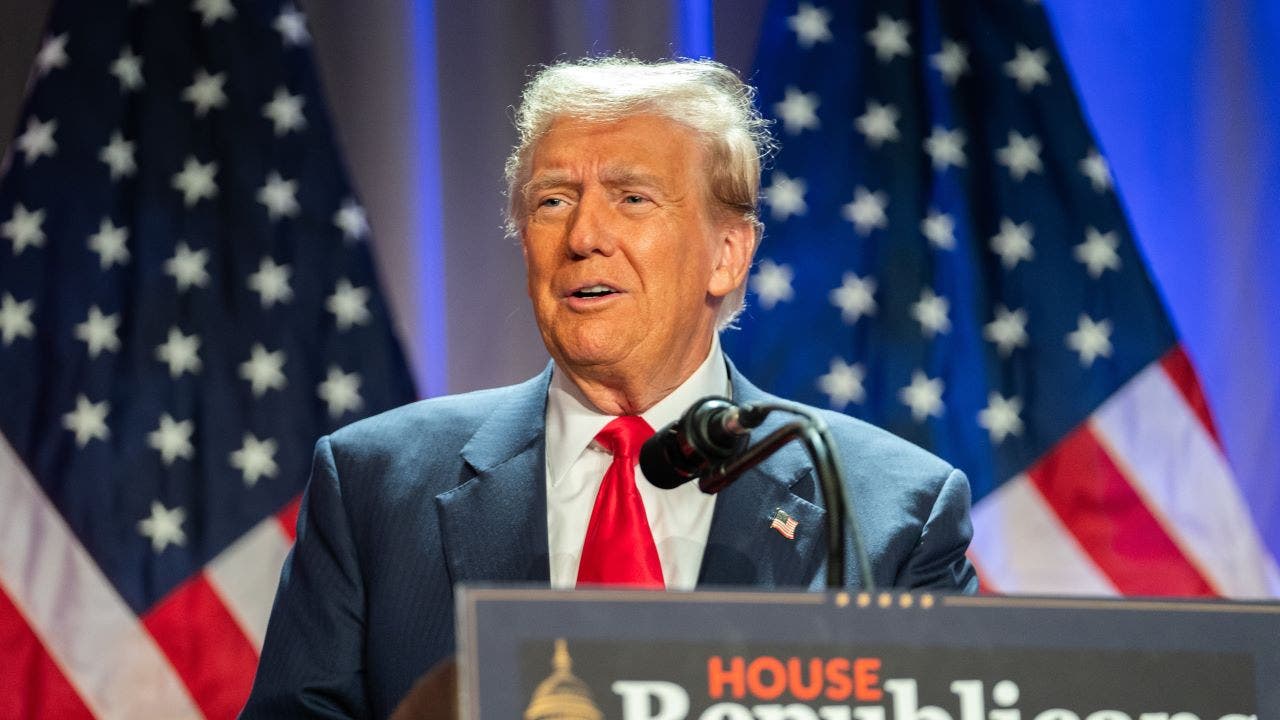
Consumer Technology Association CEO Gary Shapiro discusses how tariffs impact the prices of laptops on The Claman Countdown.
Goldman Sachs last week released a forecast for the U.S. and global economies that projected the impact of President-elect Trump’s victory on the economy in 2025, finding that the incoming administration’s planned tax cuts will boost growth, though more aggressive tariffs could dampen that impact.
Goldman Sachs economists led by Jan Hatzius projected that the U.S. economy should grow about 2.5% in 2025 according to their baseline projection, which includes an assumption that the second Trump administration will bring some fresh tax cuts, regulatory easing, reduced immigration as well as higher tariffs on products from China and imported autos.
Their base case doesn’t include a 10% across-the-board tariff on all imported goods, which Trump campaigned on, or a deportation program – both of which could have the effect of suppressing economic growth if implemented.
“We think that there are some offsetting effects: negative from tariffs and immigration, positive from fiscal policy and regulatory changes; and we get when we put this into our models offsetting effects and not a large net effect,” Hatzius explained at a briefing on Friday.
FED’S FAVORED INFLATION GAUGE SHOWED PRICE GROWTH CONTINUED TO SLOW IN SEPTEMBER
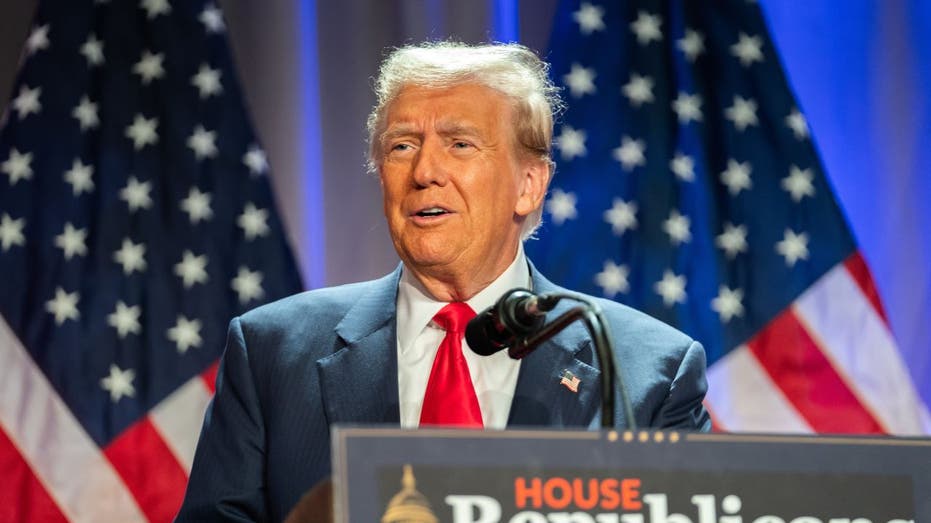
President-elect Donald Trump’s expected tax cuts and deregulation would spur growth, though more aggressive tariffs could dampen that impact, Goldman Sachs found. (Allison Robbert-Pool/Getty Images / Getty Images)
He said that they expect the Trump administration to implement its tariff policies relatively quickly, which will have the most impact on 2025, while fiscal policies like tax cuts and spending reforms have a longer lag and aren’t likely to have a notable effect until 2025 and 2026.
That dynamic contributed to a small net negative impact on GDP growth of 0.2 percentage points in 2025, and a small positive impact of 0.3 percentage points in 2026.
| Ticker | Security | Last | Change | Change % |
|---|---|---|---|---|
| GS | THE GOLDMAN SACHS GROUP INC. | 593.54 | +4.93 | +0.84% |
“These numbers are not very big, and they have not really changed the broad thrust of our forecast, which continues to be an optimistic one,” Hatzius said. “We’ve been above consensus on growth for the last couple of years, and we continue to be well above consensus for 2025, where 2.5% annual average GDP growth is a little more than half a percentage point above the latest Bloomberg consensus.”
GOLDMAN SACHS CEO DOWNPLAYS FIRM’S REPORT ON HARRIS’ ECONOMIC PLAN
Hatzius went on to explain that the Trump administration’s anticipated tariffs could cause inflation to remain slightly higher than it would without the tariffs even as the disinflation trend continues.
“The China tariffs are really the key here, that’s the most direct inflationary effect that is worth, by our estimates, 0.3 to 0.4 percentage points. If I also include the auto tariffs in that we have 0.4, so we’ve taken our forecasts for core PCE inflation by the end of next year to 2.4% from 2.0%, previously,” he said.
He added that the 2.4% PCE inflation would be lower than the current 2.7% core PCE inflation, though it’s higher than the 2.0% rate without the higher tariffs. The rebalancing of the labor market and its impact on wage growth and labor costs, as well as reduced inflation in housing costs, were the main drivers of the disinflation trend.
FED CHAIR JEROME POWELL SAYS CENTRAL BANK IN NO RUSH TO REACH ‘NEUTRAL RATE’
Given those inflation projections, Goldman Sachs projected that the Federal Reserve will cut the benchmark federal rates by 25 basis points at the next three meetings before moving to a slower pace of interest rate reductions starting in mid-2025 and eventually arriving at a range of 3.25% to 3.5%.
“One thing that I’m pretty clear on and that we feel strongly about is that the current funds rate of 4.5% to 4.75% is still quite a high funds rate in an environment in which we expect inflation to get back down to 2%, maybe not in 2025, but subsequently,” Hatzius said.
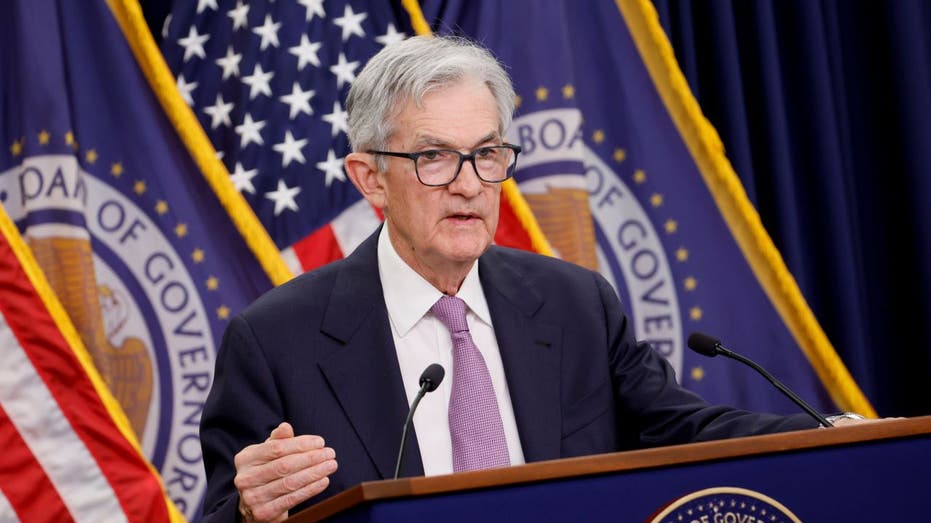
Goldman Sachs sees the Federal Reserve and Chair Jerome Powell continuing to cut interest rates at the next few meetings before slowing the pace of cuts in mid-2025. (Ting Shen/Bloomberg via Getty Images / Getty Images)
If the incoming Trump administration pursues a 10% across-the-board tariff, the report projected that growth would be slower in 2026 by an average of 1 percentage point with a peak of 1.2 points, though it would decline to 0.8 points if the tariff revenue is recycled fully into tax cuts.
TRUMP TARIFFS WOULD DRIVE UP CONSUMER PRICES: NATIONAL RETAIL FEDERATION
“The biggest risk we’re focused on is an across-the-board tariff… and if we do get 10% across the board, let’s say that would subtract more sharply from real disposable household income because a tariff increase acts like a consumption tax, effectively,” Hatzius said, noting that would be a negative as well as causing tighter financial conditions, which would add to the negative impulse.
“A lot of uncertainty around the policy environment, but we do think there would be a bigger drag on growth and there would also be a bigger increase in core PCE inflation. Our baseline is 2.4% by the end of next year, but if we get the larger tariff on top of that, we would expect something around 3% by the end of next year peaking maybe a little over 3%,” he added.
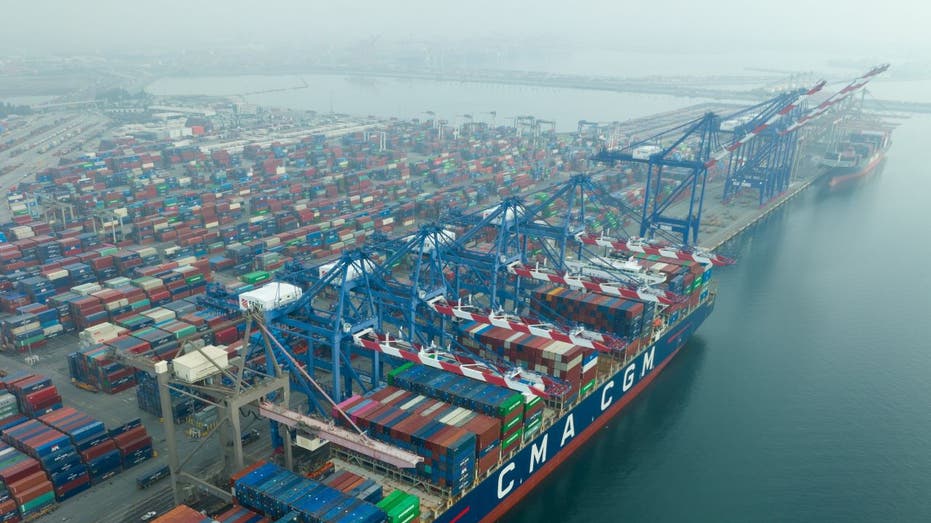
Higher tariffs could contribute to inflation remaining at a higher level than it would be without them, Goldman Sachs found. (Photo by Qian Weizhong/VCG via Getty Images / Getty Images)
The Goldman Sachs analysis also considered the deportation of unauthorized immigrants who are already in the country, including selective deportations of up to 1.2 million illegal immigrants with criminal records, or broader deportations that would remove up to 2.1 million people.
GET FOX BUSINESS ON THE GO BY CLICKING HERE
Hatzius noted that Trump’s campaign rhetoric suggested he will pursue mass deportations, given estimates of 12 to 15 million unauthorized immigrants in the country, and that while that would have more significant impacts on labor force growth and GDP growth the firm expects the rhetoric won’t match the reality.
“Our best guess is that the reality is going to stop short of some of the campaign rhetoric. I would expect a significant amount of resistance in some sense against a large number of deportations, in part because a lot of these immigrants are working in many businesses, including many small businesses around the U.S.,” Hatzius said. “We still have a very tight labor market, it’s not that easy to find replacements, and so I think that is going to be a factor as well.”


